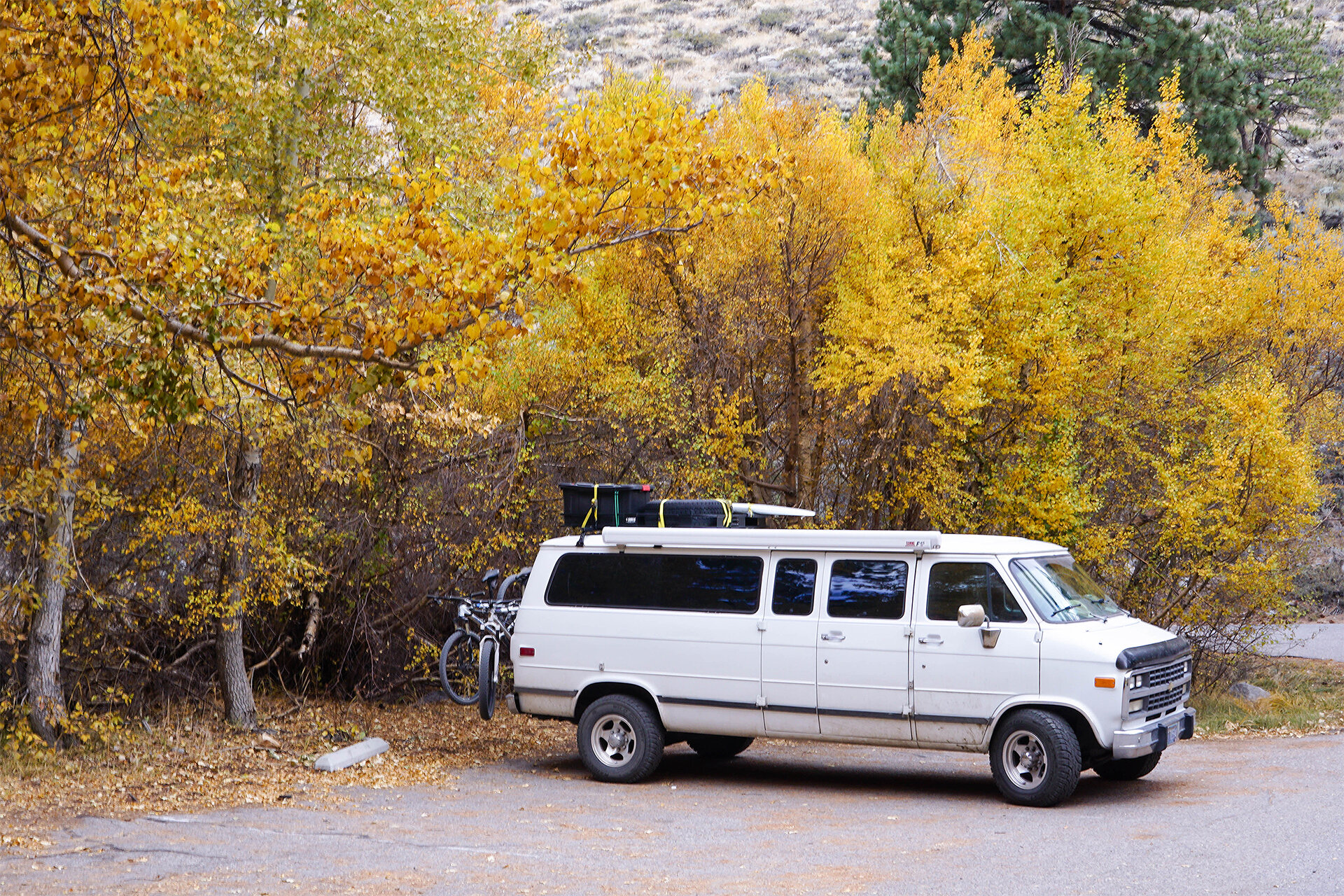The Pros And Cons Of Long-Term Van Living
Last week I wrote about ten things I’ve learned since moving into a van. In reviewing the list there were just two items specifically related to the day-to-day practicalities of living in a van.
Those being:
No 1. I don’t need much. I mentioned my necessities being warm (enough) clothing, a basic roof over my head under which to sleep, simple food options, access to trails and books, a coffee or bottle shop in which to work, and a vehicle to get from point A to B.
and
No 6. Vanlife isn’t all instagram filtered loveliness. Living with another person is work, squeeze yourselves into a tiny container on wheels, add 20 degree nights, take away plumbing, a kitchen, and soap, and you have the potential for relationship disaster.
A few days ago Susan and I discussed these two points while sitting in the van sharing a beer. We contemplated what changes we’d need to make in order for this way of living to be more realistic and practical long-term. We embarked on this journey last September thinking it’d be a 6 month trip, then a year long experiment, now we bounce around the idea of embracing this as our life. We are playing with the idea of committing to a 3-5 year mobile living plan.
We engaged in another whiteboard session, assessed our current situation, and put together a list of the current cons, pros, and necessary upgrades.
Cons of living in the Chevy:
-
There is no shower.
-
There is no kitchen.
-
There is no yoga room, or room for yoga and strength training.
-
There is no headroom.
-
There is no heater.
-
There is no bathroom.
-
Too much non-essential driving.
-
We don’t have a practical workspace in the van thus go to coffee shops everyday.
-
There is no wifi.
-
There is little storage space.
-
There are fewer income opportunities living on the road. We’ve had to stop in Bishop to get retail jobs and refocus on finding more freelance clients.
-
We aren’t eating consistently healthy, mostly because there is no headroom and kitchen. It was easy during the warmer months with longer days as we cooked outside.
Pros of living in the Chevy:
-
The cost. This lifestyle is certainly cheaper than our past lives of rent, mortgages, and car payments.
-
The flexibility and freedom to travel, learn, and pursue personal projects and work.
-
Wilderness & adventure. We place ourselves closer to nature and trails and experience more of it as a result.
-
Quality time. We have more time for those things that matter to us. Nature, walks together, taking time for ourselves, reading, solitude, learning, and writing.
-
Disconnecting. While we are still connected to the internet and social media, we spend less time with it. As well we spend little to no time watching the news and Netflix.
-
Autonomy. We set our own schedules for the most part.
Essential upgrades to long-term mobile living:
If we are going to live this way long-term, we need to make it more practical, healthy and productive.
-
Kitchen. We need to create a space to better support our commitment to healthy and consistent eating habits.
-
Heater. We can’t go another winter without heat.
-
Wifi. We need to look into satellite options or upgrade to unlimited phone so we can be more productive from our living space.
-
Storage. We need to add a little more storage and organization, the van is getting cluttered.
-
Gym. We need to create a mobile and fixed solution for yoga and strength training. We need programs and apparatuses we can use on the road, and/or we need to be in areas where we can take advantage of a gym like Snap or Planet Fitness.
-
Headspace. I’m turning 50 in less than 2 years, it’s too early to live hunched over.
-
Homespace. This is something Susan identified and I agree. We haven’t created a “homey” space. The van is very small and without headspace or room to stand and walk around it isn’t a place where we like to hang out, especially in the winter. It is very bare bones functional, which serves its purpose.
-
Healthcare. If we live mobile, traveling from state to state, we need a healthcare solution.
-
Power. We haven’t invested in power yet, so we still use headlamps in the evenings and charge up our computers and phones at coffee shops.
To embrace this mobile way of life to its fullest we’re going to begin addressing these upgrades and exploring our options. Our first priority is to increase our freelance and/or coaching income so we can remain autonomous and mobile.
— Paul








